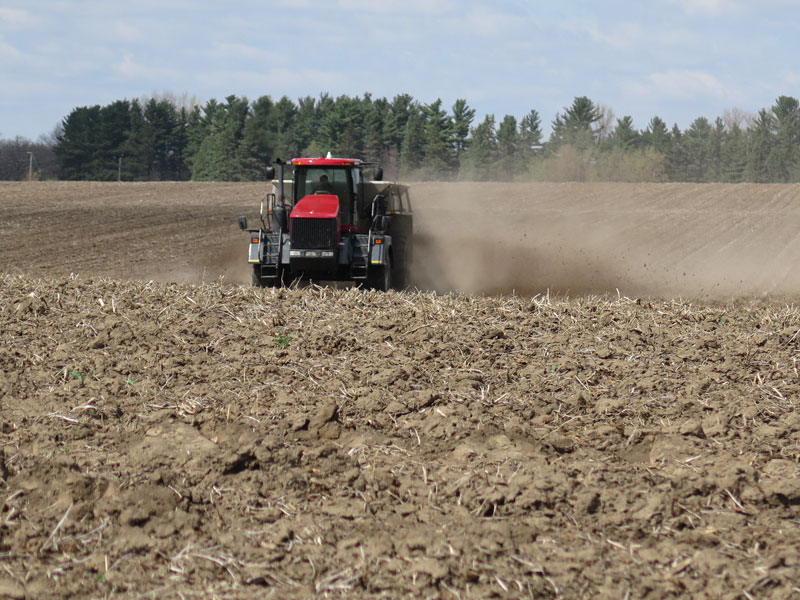As input costs rise, commodity margins fluctuate, and capital access tightens, medium and large scale corn and soybean producers are facing increasing pressure. But not all responses are created equal. Some strategies protect the bottom line without undermining soil or long-term flexibility. Below are five approaches farmers can deploy now—anchored in regenerative thinking, creative financing, and leveraging new incentives.
Embrace Regenerative Inputs to Anchor Margins
Reducing dependence on synthetic, salt-based fertilizers is no longer just a sustainability consideration, it is an operational hedge. Farmers who transition to poultry litter, compost blends, or other organic/non-synthetic sources can lower their variable nutrient cost per pound of N–P–K while improving soil resilience that cushions yield swings. Additional regenerative practices like cover cropping and no-till farming can further enhance nutrient cycling, reduce erosion, and improve water retention, compounding the benefits over time.
- Mitigating production risk: Organic inputs help stabilize soil moisture and reduce erosion, offering a buffer during extreme weather events — effectively lowering downside
- Measuring long-term performance: Even in year one, growers often see input savings, improved nutrient efficiency, and signs of better soil structure. But the real payoff builds over time. By years three to five, those early gains compound—unlocking stronger yields, more resilient soils, and higher ROI. Tracking performance year-over-year helps prove the long game’s worth.
- Stacking value locally: Sourcing poultry litter regionally keeps dollars circulating in the local ag It’s not just about freight—it’s about supporting a closed-loop system where growers, processors, and suppliers all benefit.
At Return®, a southeastern Minnesota-based supplier of pelletized poultry litter, we keep pricing consistent within a localized radius—helping growers tap into regenerative inputs without the added cost of long-haul logistics. As fertilizer margins tighten across the Corn Belt, cutting reliance on synthetic, salt-based inputs isn’t about going green—it’s about staying lean, and keeping value close to home.
Deploy Creative Input Financing to Stretch Cash Flow
Cash flow and liquidity remain key hurdles to adopting regenerative practices. Upfront input costs require flexibility, and this is where strategic financing plays a role.
Return and Growers Edge have reintroduced a Fast-Track Input Financing program tailored for regenerative production. This includes zero percent interest, a revolving credit structure, and no payments until February 2027.
The partnership includes near-instant credit decisions, competitive rates, and a 100 percent digital process. This model allows farmers to invest in soil health today while deferring repayment across multiple harvest cycles. The structure is designed to align with seasonal needs rather than traditional banking timelines.
These financing tools allow farmers to:
- Work with agronomic or input suppliers offering embedded regenerative
- Negotiate terms that align payback schedules with seasonal
- Link financing to yield improvements, enabling the system to support itself over
Farmers outside the Midwest can look for similar programs through financing companies or local input providers that understand the long-term value of regenerative practices and are willing to structure repayment accordingly.
Monetize Low-Carbon Crops via 45Z to Boost Crop Value
The 45Z Clean Fuel Production Credit offers a new way to extract more value from crops, especially for those supplying, or open to supplying, ethanol and biofuel markets. Farmers producing low carbon-intensity (C.I.) feedstocks can strengthen their downstream value by enabling processors to secure higher tax credits.
Return published a free downloadable guide outlining how producers can calculate their crop’s carbon intensity and structure agreements to capture a portion of 45Z-related value: Download the 45Z Guide.
Steps farmers can take to get started:
- Audit nitrogen usage, sources, and
- Model carbon intensity per
- Work with ethanol or biofuel buyers to establish contracts tied to I. scores.
- Negotiate terms that reflect added value from cleaner
Ethanol buyers in Minnesota and across the Midwest are increasingly seeking low-C.I. crops to maintain competitive access to these credits. Farmers outside the region can still benefit by implementing similar practices and partnering with aligned processors.
Optimize Crop Insurance & Risk Layers to Protect Equity
A resilient P&L includes a solid defense. For many large operations, optimizing insurance, hedging, and liquidity planning is essential to protecting equity in tight years.
- Strategic revenue protection: Rather than blanket policies, farmers can use supplemental coverage on high-risk acres.
- Forward contracts with upside: Engaging buyers with base-price contracts that include upside clauses provides price floor protection with room for gains.
- Maintaining liquidity buffers: Establishing operating lines or capital reserves ensures flexibility to absorb unexpected costs without resorting to reactive debt.
Operating leverage can magnify gains or losses. Smart risk-layering helps ensure it tilts in favor of long-term stability.
Capturing New Revenue Streams from Regenerative Practices
Farms can offer more than yield. Strategic diversification and value-added practices can generate new income streams:
- Carbon and ecosystem service credits: Programs in the Midwest and nationally reward regenerative practices like carbon sequestration, reduced tillage, and water quality Farmers can explore platforms such as Indigo Ag and Truterra for market access and payment structures.
- Identity-preserved marketing: Regenerative, low-carbon, and organic grains—like non-GMO corn, Kernza®, food-grade soybeans, and specialty small grains—can command premiums through identity-preserved contracts. Building traceability and working with values-based buyers enables farmers to differentiate beyond the commodity market.
- Create a regenerative plan for acreage: Increasingly more land owners are giving preferential access to soil-forward farming.
Conclusion: Anchoring Profitability Through Regenerative Levers
The financial pressure on large grain producers isn’t expected to ease soon. But strategies like reducing synthetic, salt based input dependence, leveraging 45Z, securing smart financing, and diversifying revenue can help buffer against volatility.
Return works with producers across the Midwest and beyond to turn regenerative practices into financial advantage. With the right tools and insights, farmers can unlock value beyond yield — in soil, savings, and stronger seasonal returns.







